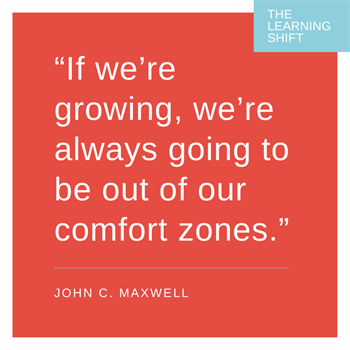THE LEARNING SHIFT: Why interactive learning tutorials are the new textbooks
CONTENT
 Students need current content and practices that focus on the need-to-know for a nurse generalist today and reduces the nice-to-know. With a more tailored scope, students can dive deeper into what they’re learning for better absorption and retention.
Students need current content and practices that focus on the need-to-know for a nurse generalist today and reduces the nice-to-know. With a more tailored scope, students can dive deeper into what they’re learning for better absorption and retention.Textbooks contribute to the oversaturation of content hindering students and are often outdated the moment they're available for purchase.
LEARN ABOUT ENGAGE FUNDAMENTALS
A first-of-its-kind, fully interactive solution that truly engages students and enhances learning
LEARNING STYLES
We all know that most students just don’t read. The Bill & Melinda Gates Foundation reports that the serious-minded, success-focused Generation Z has been steeped in technology since kindergarten. These students’ expectation, then, is for teaching to follow suit.Textbooks lack engaging components and students don’t have the time required to absorb a textbook.
THE LEARNING SHIFT
A shift from textbooks to interactive, online content offers a two-way learning experience where students engage along the way with tutorials packed with multimedia like videos, animations, interactive diagrams, definitions with pronunciations, educational application games, quizzes, virtual scenario challenges, collaboration with classmates, and more. Plus, with online engagement, educators can track student preparedness for class and growth throughout the course or curriculum.BETTER TEST SCORES
- Double-digit improvements
One study showed online lessons with interactive features improved science test scores by an average of 16.7% compared with 5.7% of students using textbooks.1
- Aid for struggling students
Underachieving students have seen improvements of up to 18% in science scores, closing the gap with peers, when using screen-based solutions.1
- Better performance & higher satisfaction
A study illustrated the effectiveness of fully interactive, multimedia-based e-learning through better student performance and higher levels of satisfaction.2
- Augmented erudition
A literature review on the cognitive-affective theory of learning showed that guided activities, reflection, feedback, pacing, and pretraining — key aspects of interactive multimodal learning — were fundamental to maximizing learning.3
 MENTAL & MOTIVATIONAL ADVANTAGES
MENTAL & MOTIVATIONAL ADVANTAGES
- Deeper learning
Research shows the greater engagement with interactive media leads to higher cognitive absorption of content. Plus, specific attributes — physical interaction, interface assessment, absorption, and digital outreach — were proven predictors of attitudinal and learning outcomes.4
- Improved critical thinking
Screen-based multimedia learning materials have proven to be “valid, practical, and effective.”5
- Faster achievement of learning objectives
Tech-based instruction can reduce the time students take to reach a learning objective — by as much as 80%.6
- Increased motivation
Teachers report interactive tutorials increase students’ motivation to learn.7
- Higher enjoyment
Students using interactive modules voluntarily revisit and recomplete assignments at an increased level compared to those using traditional textbooks.8
- Bigger, better, bolder
Interactive learning has proven to motivate students to learn, made learning more exciting, increased students’ attention toward instruction, was more efficient, and increased students’ interest in the class.9
STRATEGIC REMEDIATION
- Immediate feedback on learning
Active learning requires agile teaching, which requires information. Digital learning tutorials, however, with integrated questions, provide immediate feedback on what students have achieved and where they need more assistance.10
- Small vs. major adjustments in teaching
Screen-based modules allow for synchronous assessment; educators can see students’ comprehension in real time, allowing them to make small lesson adjustments as students begin to veer off course rather than taking an assessment just before a major exam and suddenly making significant corrections.10
- Controlled access
Educators report enjoying the ability to release learning in sections, week by week, so students can’t skip ahead and must master what’s in front of them before they can move on.11
- Self-paced
Students can learn material at their own pace, rerunning simulations multiple times to help them internalize principles being demonstrated.12
 ENHANCED ENGAGEMENT
ENHANCED ENGAGEMENT
- More challenged tactile learners
Interactive technology benefits a wide variety of learner types. Kinaesthetic learners, in particular, gain from multi-modal options.12
- Superior self-assessment
Screen-based learning provides multiple options for self-assessment, such as via sample problems with step-by-step solutions or interactive checkpoint problems that supply hints when requested.12
- Fun + feedback
Students learning medication-dosage calculations said interactive media was more enjoyable and interesting than textbooks and provided sufficient feedback.13
- Overcoming boredom
Students across four countries preferred the dynamic presentations, effective animation, comic effects, and interactive media of digital learning resources.14
Click here to download the layout below in PDF form to share with colleagues.

SOURCES
1Online learning wins out over textbooks in boosting science scores. [Web log post]. 2018, February. Retrieved from https://www.forbes.com/sites/nickmorrison/2018/02/13/online-learning-wins-out-over-textbooks-in-boosting-science-scores/#3d39cbf21d952Edgcomb, A. D., Vahid, F., Lysecky, R. L., Knoesen, A., Amirtharajah, R., & Dorf, M. L. (2015). Student performance improvement using interactive textbooks: A three-university cross-semester analysis. In 122nd ASEE Annual Conference and Exposition: Making value for Society American Society for Engineering Education.
3Moreno, R. & Mayer, R. Educ Psychol Rev (2007) 19: 309.
4Oh, Jeeyun & Bellur, Saraswathi & Sundar, S. Shyam. (2015). Clicking, assessing, immersing, and sharing: An empirical model of user engagement with interactive media. Communication Research. 45.10.1177/0093650215600493.
5Djamas, Djusmaini & Tinedi, Vonny & Yohandri,. (2018). Development of interactive multimedia learning materials for improving critical thinking skills. International Journal of Information and Communication Technology Education. 14. 66-84. 10.4018/IJICTE.2018100105.
6Afrasiabifar, Ardashir & Asadolah, Mosavi. (2019). Effectiveness of shifting traditional lecture to interactive lecture to teach nursing students. 37. 60-69. 10.17533/udea.iee.v37n1a07.
7Should tablets replace textbooks in k-12 schools? [Web log post]. 2018, December. Retrieved from https://tablets-textbooks.procon.org/.
8Student usage and behavioral patterns with online interactive textbook materials [Web log post]. 2015. Retrieved from https://www.semanticscholar.org/paper/student-usage-and-behavioral-patterns-with-online-edgcomb-haas/0967b74295e3d033891c97b35cc023f6412fd2a9.
9Blanche W. O'Bannon, Gary J. Skolits & Jennifer K. Lubke (2017) The influence of digital interactive textbook instruction on student learning preferences, outcomes, and motivation, Journal of Research on Technology in Education, 49:3-4, 103-116, DOI:10.1080/15391523.2017.1303798.
105 Reasons the switch to digital textbooks is long overdue. [Web log post]. 2019, February. Retrieved from https://tophat.com/blog/digital-interactive-textbooks-future/.
11What to do if students don’t read the textbook. [Web log post]. 2018, November. Retrieved from https://tophat.com/blog/students-dont-read-textbook/.
12Coelho ACC. Interactive textbooks and student's learning. E-Teals: An e-Journal of Teacher Education & Applied Language Studies. 2010;(1):13-43.
13Maag, Margaret. (2004). The effectiveness of an interactive multimedia learning tool on nursing studentsʼ math knowledge and self-efficacy. Computers, informatics, nursing: CIN. 22. 26-33. 10.1097/00024665-200401000-00007.
14Tomos, Florica & Mozelius, Peter & Shabalina, Olga & Balan, Oana & Malliarakis, Christos & Miller, Christopher & Turner, David & Jones, Paul. (2013). An international approach to creative pedagogy and students' preferences of interactive media. Proceedings of the European Conference on e-Learning, ECEL.

